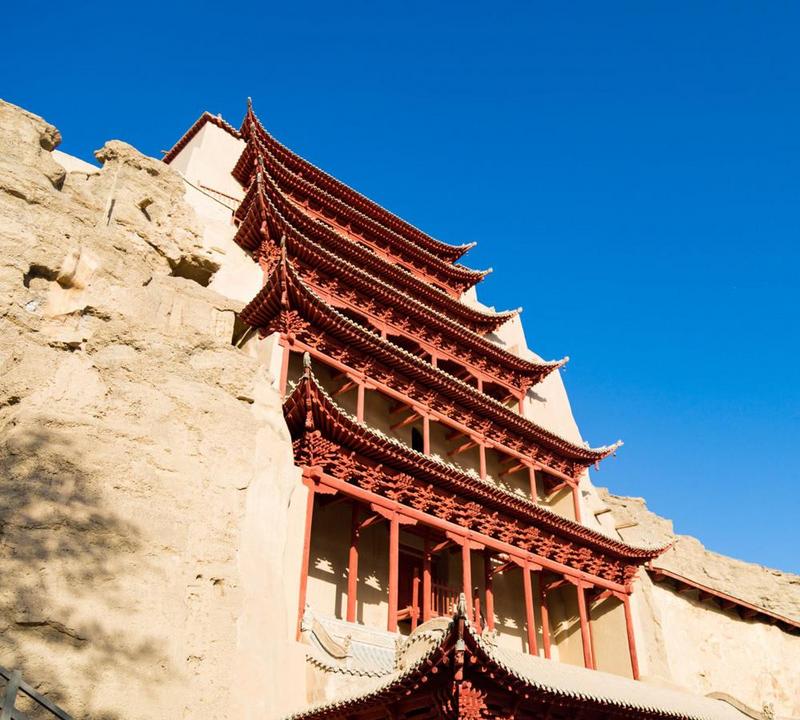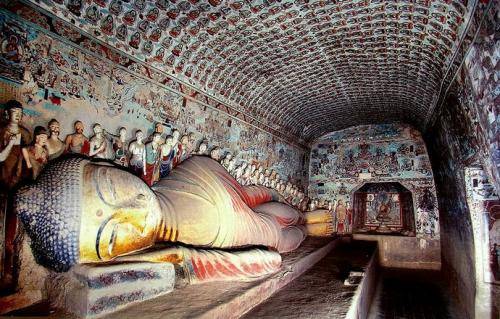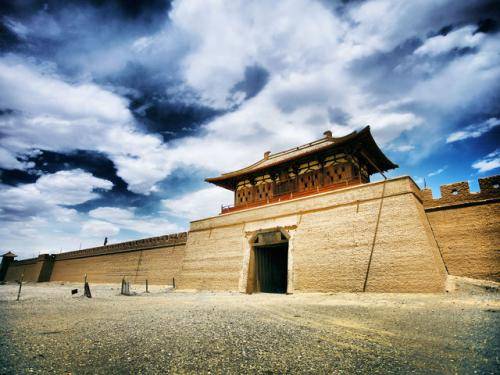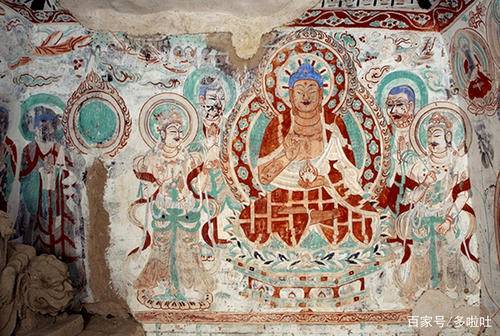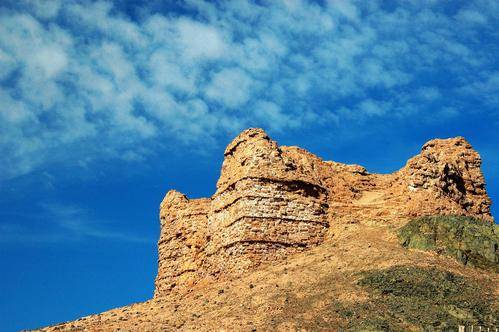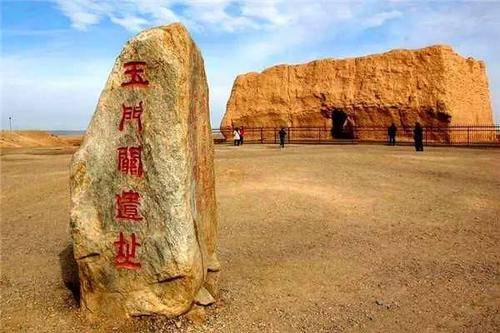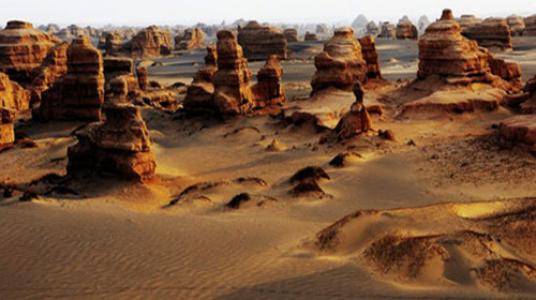As a symbol of Dunhuang, the Mogao Caves, known as the 'Oriental Louvre,' is a must-visit destination in Dunhuang. Here, you will find well-preserved and intricately carved Buddha statues, meticulously outlined and finely depicted murals. Craftsmen from various dynasties in ancient times have left the world with invaluable gifts on this vast, sandy land.
Mingsha Mountain & Crescent Spring
Mingsha Mountain is named for the sound of moving sand. Here, a clear spring is embraced by sand dunes. Viewed from above, the crescent-shaped Crescent Spring is the most famous scenery of Mingsha Mountain. When visiting Mingsha Mountain, sand sliding and camel riding are essential experiences. On the vast desert sands, camel caravans move forward in a winding line, offering a unique charm.
Dunhuang Ancient City is a film city built in the 1980s, modeled after the ancient city of Shazhou in the Song Dynasty. To this day, many films and TV shows such as 'Detective Dee', 'New Dragon Gate Inn', and 'Candle in the Tomb' have been filmed here. Every table and chair inside can be used as props, and with various imaginative ideas, everyone can shoot a set of ancient costume blockbusters here.
Located on the cliffs west of the Mogao Caves, the Western Thousand Buddha Caves were carved earlier than the Mogao Caves. The Western Thousand Buddha Caves contain many well-preserved exquisite murals. There are far fewer tourists here compared to the Mogao Caves, allowing for a clearer view of the masterful craftsmanship on the stone walls from centuries ago. Visitors can also take a walk in the Dangxiang Valley, where they can see the standing stone walls and the serene river.
Yangguan
'I urge you to drink another cup of wine, for west of Yangguan there will be no old friends.' This ancient city, sung by poets and literati throughout the ages, now has only one last beacon tower standing tall for centuries, guarding the vast desert as it always has. A reconstructed ancient Yangguan city has been built in the scenic area. Although newly built, it restores the appearance of the ancient Yangguan city. At the gate, there are officers in armor inspecting the travel documents of passersby. Coming here feels like truly returning to a thousand years ago.
Yumen Pass
Yumen Pass, along with Yang Pass to the south, forms a picturesque pair. Commonly known as Xiaofangpancheng, Yumen Pass looks like a small square block from a distance. This ancient pass was the most important pass in the west during the Han Dynasty. Despite erosion by wind and sand, the grandeur of the Han Great Wall can still be faintly seen. With no willows growing and the spring breeze hard to pass, stepping on the pass that was once trodden by caravans and monks thousands of years ago, one exits Yumen Pass to the west and ahead lies the desolate Ghost City.
Yadan Devil City
Under the night sky, the Yadan landscape is accompanied by howling winds that sound like roars, creating a spine-chilling atmosphere, hence the name 'Devil City'. Vegetation is scarce here, and the area is filled with gray-black sand and stones. The ochre-yellow mounds have been sculpted by wind and sand into various bizarre shapes. The most spectacular sight is the 'West Sea Fleet', where dozens of long earthen platforms, stretching for miles, are arranged in parallel, resembling a fleet sailing through a sea of sand. The sunset in Devil City is the most beautiful, with the evening glow illuminating the landscape in a magnificent and grand manner.
